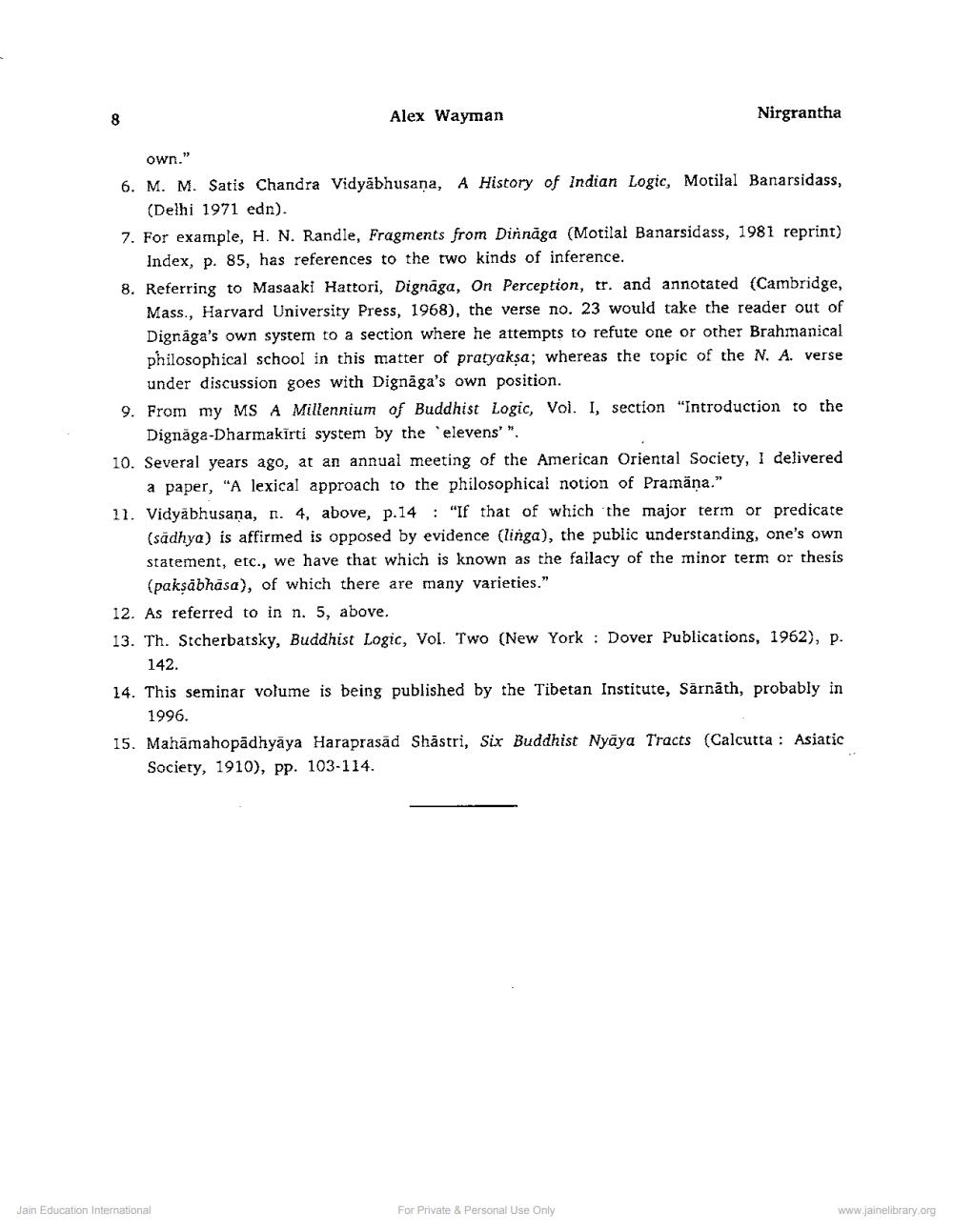Book Title: Nyayavatara and Buddhist Logical Works Author(s): Alex Wayman Publisher: Z_Nirgrantha_1_022701.pdf and Nirgrantha_2_022702.pdf and Nirgrantha_3_022703.pdf View full book textPage 8
________________ Alex Wayman Nirgrantha own." 6. M. M. Satis Chandra Vidyabhusana, A History of Indian Logic, Motilal Banarsidass, (Delhi 1971 edn). 7. For example, H. N. Randle, Fragments from Dinnaga (Motilal Banarsidass, 1981 reprint) Index, p. 85, has references to the two kinds of inference. 8. Referring to Masaaki Hattori, Dignaga, On Perception, tr. and annotated (Cambridge, Mass., Harvard University Press, 1968), the verse no. 23 would take the reader out of Dignaga's own system to a section where he attempts to refute one or other Brahmanica! philosophical school in this matter of pratyaksa; whereas the topic of the N. A. verse under discussion goes with Dignaga's own position. 9. From my MS A Millennium of Buddhist Logic, Voi. I, section "Introduction to the Dignaga-Dharmakirti system by the `elevens' ". 10. Several years ago, at an annual meeting of the American Oriental Society, I delivered a paper, "A lexical approach to the philosophical notion of Pramana." 11. Vidyabhusana, n. 4, above, p.14 : "If that of which the major term or predicate (sadhya) is affirmed is opposed by evidence (linga), the public understanding, one's own statement, etc., we have that which is known as the fallacy of the minor term or thesis (paksabhasa), of which there are many varieties." 12. As referred to in n. 5, above. 13. Th. Sicherbatsky, Buddhist Logic, Vol. Two (New York : Dover Publications, 1962), p. 142. 14. This seminar volume is being published by the Tibetan Institute, Sarnath, probably in 1996. 15. Mahamahopadhyaya Haraprasad Shastri, Six Buddhist Nyaya Tracts (Calcutta : Asiatic Society, 1910), pp. 103-114. Jain Education International For Private & Personal Use Only www.jainelibrary.orgPage Navigation
1 ... 6 7 8
